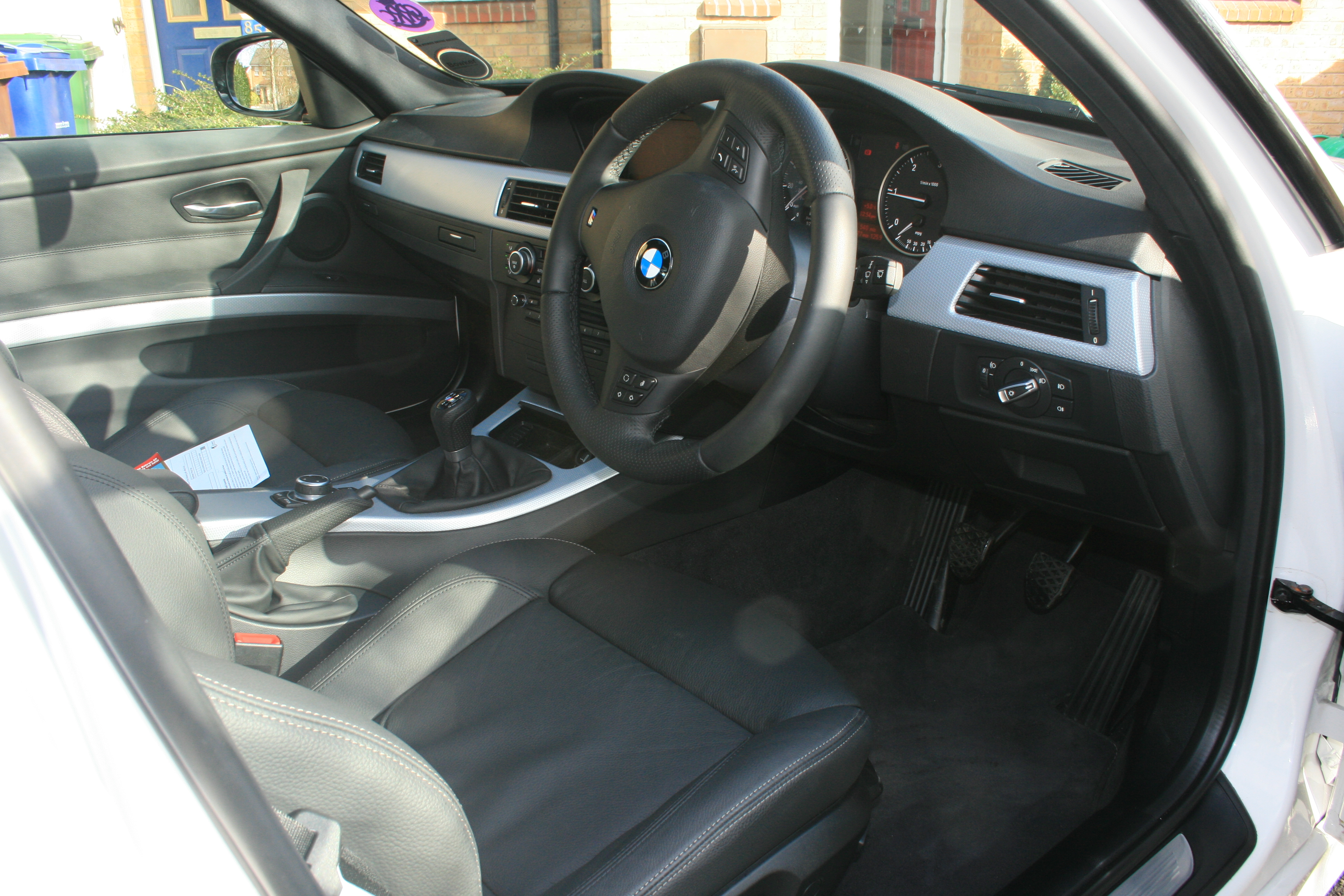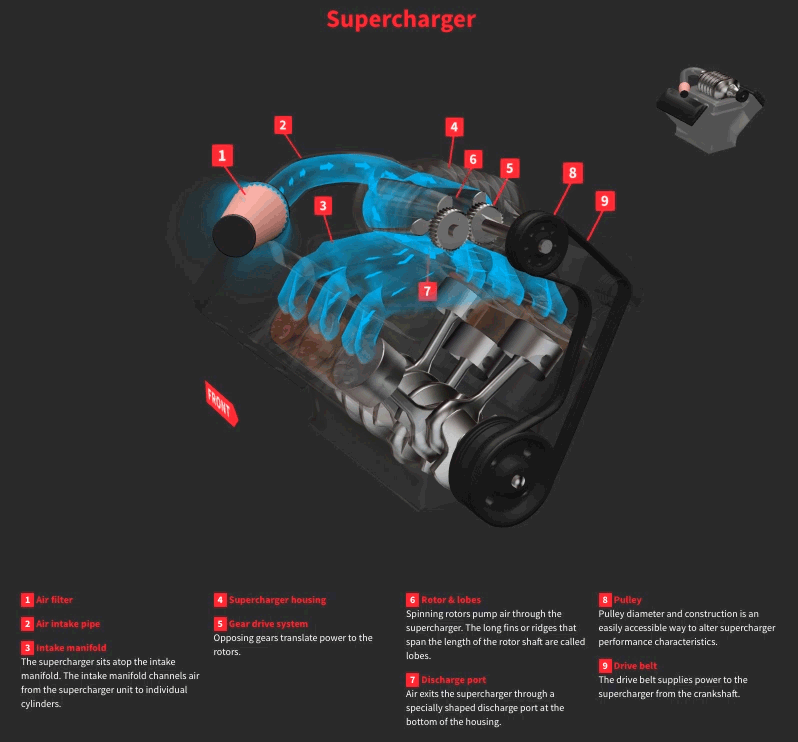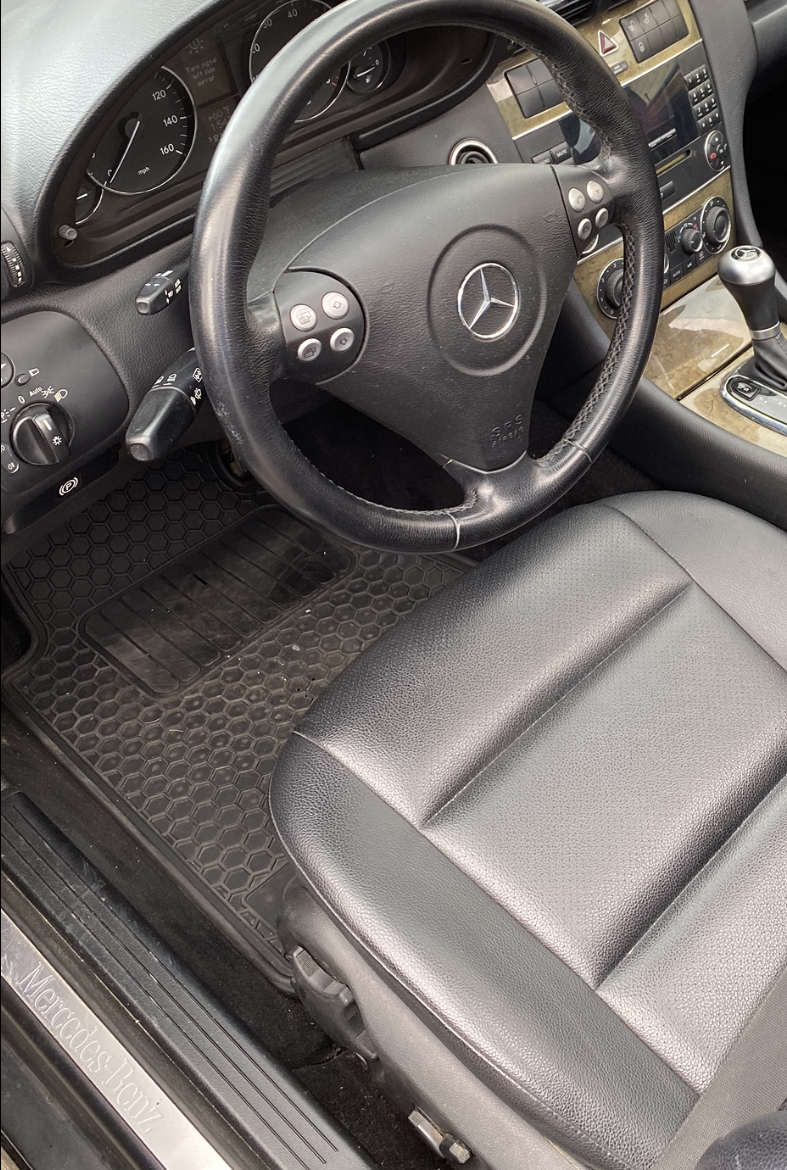|
Audi S4
The Audi S4 is the high performance variant of Audi's compact executive car A4. The original Audi S4, built from 1991 until 1994, was a performance-oriented version of Audi's 100 saloon/sedan. All subsequent S4s since 1997 have been based on the Audi A4; and as the A4 has evolved from one generation to the next, so has the S4. Like its regular A4 counterpart, all S4 variants have had longitudinally oriented, front-mounted engines. All versions of the S4 have their transmission mounted immediately at the rear of the engine in a longitudinal orientation, in the form of a transaxle, and like all Audi "S" cars, are only available as standard with Audi's quattro all-wheel drive (AWD) system, using a Torsen-based centre differential system.ETKA official factory data A more powerful internal combustion engine, larger upgraded brakes, firmer suspension, larger wheels, and distinctive sheetmetal, styling clues and badging have always been amongst the many upgrades the S4 receives ov ... [...More Info...] [...Related Items...] OR: [Wikipedia] [Google] [Baidu] |
Audi S And RS Models
Audi S and RS models are a range of high performance versions of certain car models of the German automotive company Audi AG. These cars primarily focus on enhanced "sport" performance. Production of Audi "S" cars began in 1990 with the S2 Coupé, whilst the first "RS" car appeared four years later with the Audi RS 2 Avant. Today's S and RS models are based on the A/e-tron GT/Q models with the same number (e.g. S4/ RS 4 is based on the A4 or the RS Q3 based on the Q3), but the "Ur-S4" from 1991 to 1994 was based on the Audi 100/200 later named A6 and the first S2/ RS2 generation from 1990 to 1995 was based on the Audi 80/90 platform later replaced by the A4. History The history of road versions of Audi racing cars begins in the 1980s, from models Audi Quattro and Audi Sport Quattro made by concern Audi AG in the city of Ingolstadt. In 1983, the company Quattro GmbH was founded (since November 2016, " Audi Sport GmbH") in the city of Neckarsulm responsible for t ... [...More Info...] [...Related Items...] OR: [Wikipedia] [Google] [Baidu] |
Audi AG
Audi AG () is a German automotive manufacturer of luxury vehicles headquartered in Ingolstadt, Bavaria, Germany. A subsidiary of the Volkswagen Group, Audi produces vehicles in nine production facilities worldwide. The origins of the company are complex, dating back to the early 20th century and the initial enterprises (Horch and the ''Audiwerke'') founded by engineer August Horch. Two other manufacturers (DKW and Wanderer (car), Wanderer) also contributed to the foundation of Auto Union in 1932. The modern Audi era began in the 1960s, when Auto Union was acquired by Volkswagen from Daimler-Benz. After relaunching the Audi brand with the 1965 introduction of the Audi F103 series, Volkswagen merged Auto Union with NSU Motorenwerke in 1969, thus creating the present-day form of the company. The company name is based on the Latin translation of the surname of the founder, August Horch. , meaning 'listen', becomes in Latin. The four rings of the Audi logo each represent one of fo ... [...More Info...] [...Related Items...] OR: [Wikipedia] [Google] [Baidu] |
Torsen
Torsen Torque-Sensing (full name Torsen traction) is a type of limited-slip differential used in automobiles. It was invented by American Vernon Gleasman and manufactured by the Gleason Corporation. Torsen is a portmanteau of Torque-Sensing. ''TORSEN'' and ''TORSEN Traction'' are registered trademarks of JTEKT Torsen North America Inc (formerly Zexel Corporation, formerly Gleason Power Systems). All Torsen differentials have their origin in the Dual-Drive Differential that was invented and patented by Gleasman in 1958. Use Torsen differentials can be used in one or more positions on a motor vehicle: * center—used to apportion torque appropriately between front and rear axles on an all-wheel drive vehicle. * rear—used to apportion torque appropriately between left and right sides in rear axles. This may be on either a rear-wheel drive or a four-wheel drive vehicle. * front—used to apportion torque appropriately between left and right sides in front axles. This may be on ei ... [...More Info...] [...Related Items...] OR: [Wikipedia] [Google] [Baidu] |
BMW 3 Series (E90)
The fifth generation of the BMW 3 Series range of compact executive cars is designated under the model codes E90 (saloon), E91 (estate, marketed as 'Touring'), E92 (coupé) and E93 (convertible). The model was introduced in December 2004, and produced by BMW until October 2013 and is often collectively referred to as the E90, E9x, or occasionally, the E92. The E92 335i was the first 3 Series model produced with a turbocharged petrol engine. It was also the first 3 Series to include the iDrive operating system, which consists of navigation, infotainment and essential vehicle functions. The E9x saw the introduction of run-flat tyres to the 3 Series range. Models with run-flat tires are not equipped with a spare tyre. The E90/E92/E93 M3 is the only generation of M3 to be powered by a V8 engine. Introduced in 2007, it uses the BMW S65 naturally aspirated V8 engine and was produced in saloon, coupé and convertible body styles. Following the introduction of the F30/F31 3 Serie ... [...More Info...] [...Related Items...] OR: [Wikipedia] [Google] [Baidu] |
Supercharger
In an internal combustion engine, a supercharger compresses the intake gas, forcing more air into the engine in order to produce more power for a given displacement (engine), displacement. It is a form of forced induction that is mechanically powered (usually by a belt from the engine's crankshaft), as opposed to a turbocharger, which is powered by the kinetic energy of the exhaust gases. However, up until the mid-20th century, a turbocharger was called a "turbosupercharger" and was considered a type of supercharger. The first supercharged engine was built in 1878, with usage in aircraft engines beginning in the 1910s and usage in car engines beginning in the 1920s. In piston engines used by aircraft, supercharging was often used to compensate for the lower air density at high altitudes. Supercharging is less commonly used in the 21st century, as manufacturers have shifted to turbochargers to reduce fuel consumption and increase power outputs, especially with reduced engine dis ... [...More Info...] [...Related Items...] OR: [Wikipedia] [Google] [Baidu] |
Mercedes-Benz C-Class (W203)
The Mercedes-Benz C-Class (W203) is the internal designation for a range of compact executive cars manufactured and marketed by DaimlerChrysler from 1999 to 2010, as the second generation of the C-Class — in sedan/saloon, three-door hatchback coupé (marketed as the ''SportCoupé'' and sub-designated ''CL203'') and station wagon/estate (sub-designated ''S203'') body styles. Design and development Design work on the W203 C-Class began in mid-1994, with the final design approved in December 1995 by the executive board. Design patents were filed on 20 April 1998 and 4 March 1999. Testing began in 1997, with development concluding in 2000. The second generation C-Class was presented on March 21, 2000 and went on sale starting in September 2000. The sedan debuted with a range of inline-four and V6 petrol engines and inline-four and -five diesels. Most of the engines were carried over from the W202, but the C 320 was exclusive, offering . The diesels now featured common rai ... [...More Info...] [...Related Items...] OR: [Wikipedia] [Google] [Baidu] |
Inline 6
A straight-six engine (also referred to as an inline-six engine; abbreviated I6 or L6) is a piston engine with six cylinders arranged in a straight line along the crankshaft. A straight-six engine has perfect primary and secondary engine balance, resulting in fewer vibrations than other designs of six or fewer cylinders. Until the mid-20th century, the straight-six layout was the most common design for engines with six cylinders. However, V6 engines gradually became more common in the 1970s and by the 2000s, V6 engines had replaced straight-six engines in most light automotive applications. Characteristics In terms of packaging, straight-six engines are almost always narrower than a V6 engine or V8 engine, but longer than straight-four engines, V6s, and most V8s. Compared to V-configuration engines with similar power and displacement, the straight configuration has fewer injectors, a single head, and a single exhaust manifold, all contributing to better reliability and perfor ... [...More Info...] [...Related Items...] OR: [Wikipedia] [Google] [Baidu] |
E46 M3
The BMW M3 is a high-performance version of the BMW 3 Series, developed by BMW's in-house motorsport division, BMW M GmbH. M3 models have been produced for every generation of 3 Series since the E30 M3 was introduced in 1986. The initial model was available in a coupé body style, with a convertible body style made available soon after. M3 saloons were offered initially during the E36 (1994–1999) and E90 (2008–2012) generations. Since 2014, the coupé and convertible models have been rebranded as the 4 Series range, making the high-performance variant the M4. Variants of the 3 Series since then have seen the M3 produced as a saloon, until 2020, when the M3 was produced as an estate (Touring) for the first time, alongside the saloon variant. E30 generation (1986–1991) The first BMW M3 was based on the E30 3 Series and was intended to be a homologation special to satisfy the Deutsche Tourenwagen Meisterschaft and Group A Touring rules, which required a total of ... [...More Info...] [...Related Items...] OR: [Wikipedia] [Google] [Baidu] |
V8 Engine
A V8 engine is an eight- cylinder piston engine in which two banks of four cylinders share a common crankshaft and are arranged in a V configuration. Origins The first known V8 was the Antoinette, designed by Léon Levavasseur, and built in 1904 by the French Antoinette company for use in speedboat racing, cars, and later, airplanes. Also in 1904, V8 engines began small-scale production by Renault and Buchet for use in race cars. Design V-angle Most engines use a V-angle (the angle between the two banks of cylinders) of 90 degrees. This angle results in good engine balance, which results in low vibrations. However, the downside is the greater width of the engine compared to those that use a smaller V-angle. V8 engines with a 60-degree V-angle were used in the 1996–1999 Ford Taurus SHO, the 2005–2011 Volvo XC90, and the 2006–2009 Volvo S80. The Ford engine used a 60-degree V-angle because it was based on a V6 engine with a 60-degree V-angle. ... [...More Info...] [...Related Items...] OR: [Wikipedia] [Google] [Baidu] |
V6 Engine
A V6 engine is a six- cylinder piston engine where the cylinders and cylinder blocks share a common crankshaft and are arranged in a V configuration. The first V6 engines were designed and produced independently by Marmon Motor Car Company, Deutz Gasmotoren Fabrik and Delahaye. Engines built after World War II include the Lancia V6 engine in 1950 for the Lancia Aurelia, and the Buick V6 engine in 1962 for the Buick Special. The V6 layout has become the most common layout for six-cylinder automotive engines. Design Due to their short length, V6 engines are often used as the larger engine option for vehicles which are otherwise produced with inline-four engines, especially in transverse engine vehicles. A downside for luxury cars is that V6 engines produce more vibrations than straight-six engines. Some sports cars like the Porsche 911 use flat-six engines instead of V6 engines, due to their near perfect primary engine balance and lower centre of gravity (which ... [...More Info...] [...Related Items...] OR: [Wikipedia] [Google] [Baidu] |
Straight-five Engine
The straight-five engine (also referred to as an inline-five engine; abbreviated I5 or L5) is a piston engine with five cylinders mounted in a straight line along the crankshaft. Although less common than straight-four engines and straight-six engines, straight-five engine designs have been used by automobile manufacturers since the late 1930s. The most notable examples include the Mercedes Benz's diesel engines from 1974 to 2006 and Audi's petrol engines from 1979 to the present. Straight-five engines are smoother running than straight-four engines and shorter than straight-six engines. However, achieving consistent fueling across all cylinders was problematic prior to the adoption of fuel injection. Characteristics Straight-five engines are typically shorter than straight-six engines, making them easier to fit transversely in an engine bay. They are also smoother than straight-four engines, and are narrower than V engines and flat engines. Engine balance and vibration ... [...More Info...] [...Related Items...] OR: [Wikipedia] [Google] [Baidu] |
Turbocharger
In an internal combustion engine, a turbocharger (also known as a turbo or a turbosupercharger) is a forced induction device that is powered by the flow of exhaust gases. It uses this energy to compress the intake air, forcing more air into the engine in order to produce more power for a given displacement. Turbochargers are distinguished from superchargers in that a turbocharger is powered by the kinetic energy of the exhaust gases, whereas a is mechanically powered (usually by a belt from the engine's crankshaft). However, up until the mid-20th century, a turbocharger was called a "turbosupercharger" and was considered a type of supercharger. History Prior to the inv ...[...More Info...] [...Related Items...] OR: [Wikipedia] [Google] [Baidu] |







